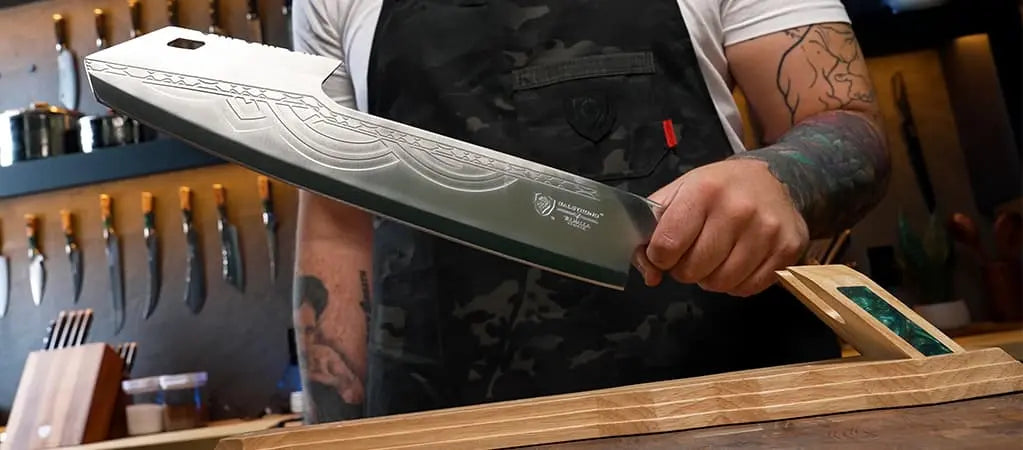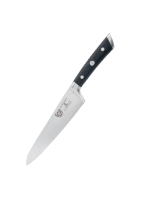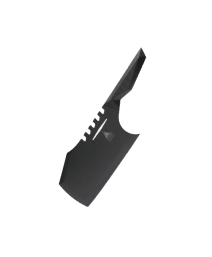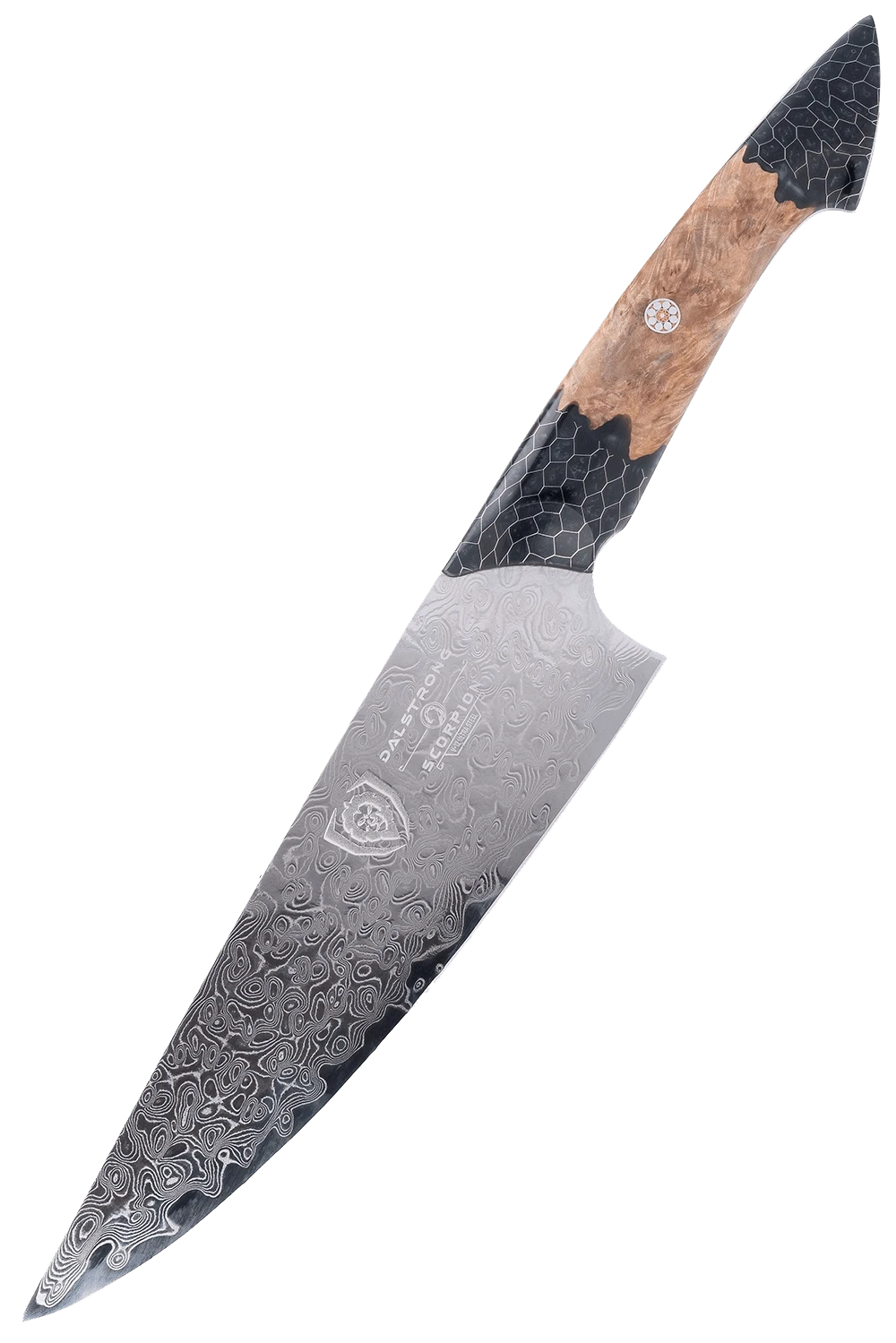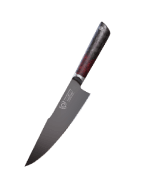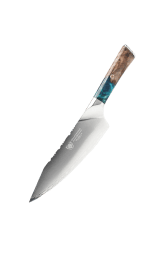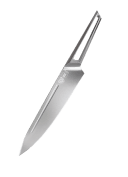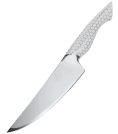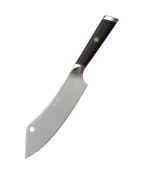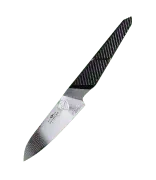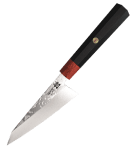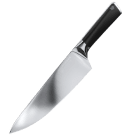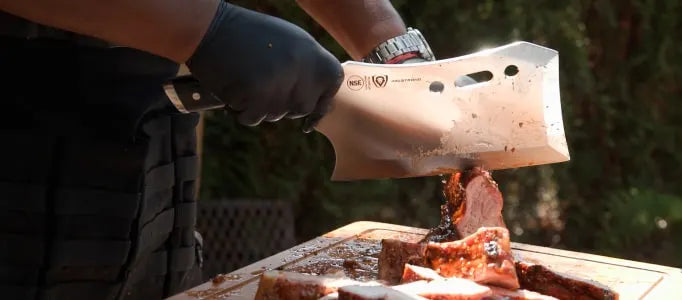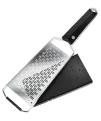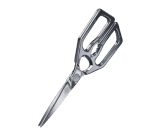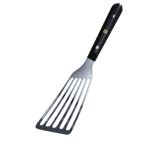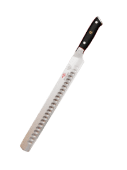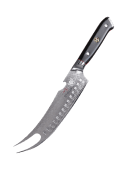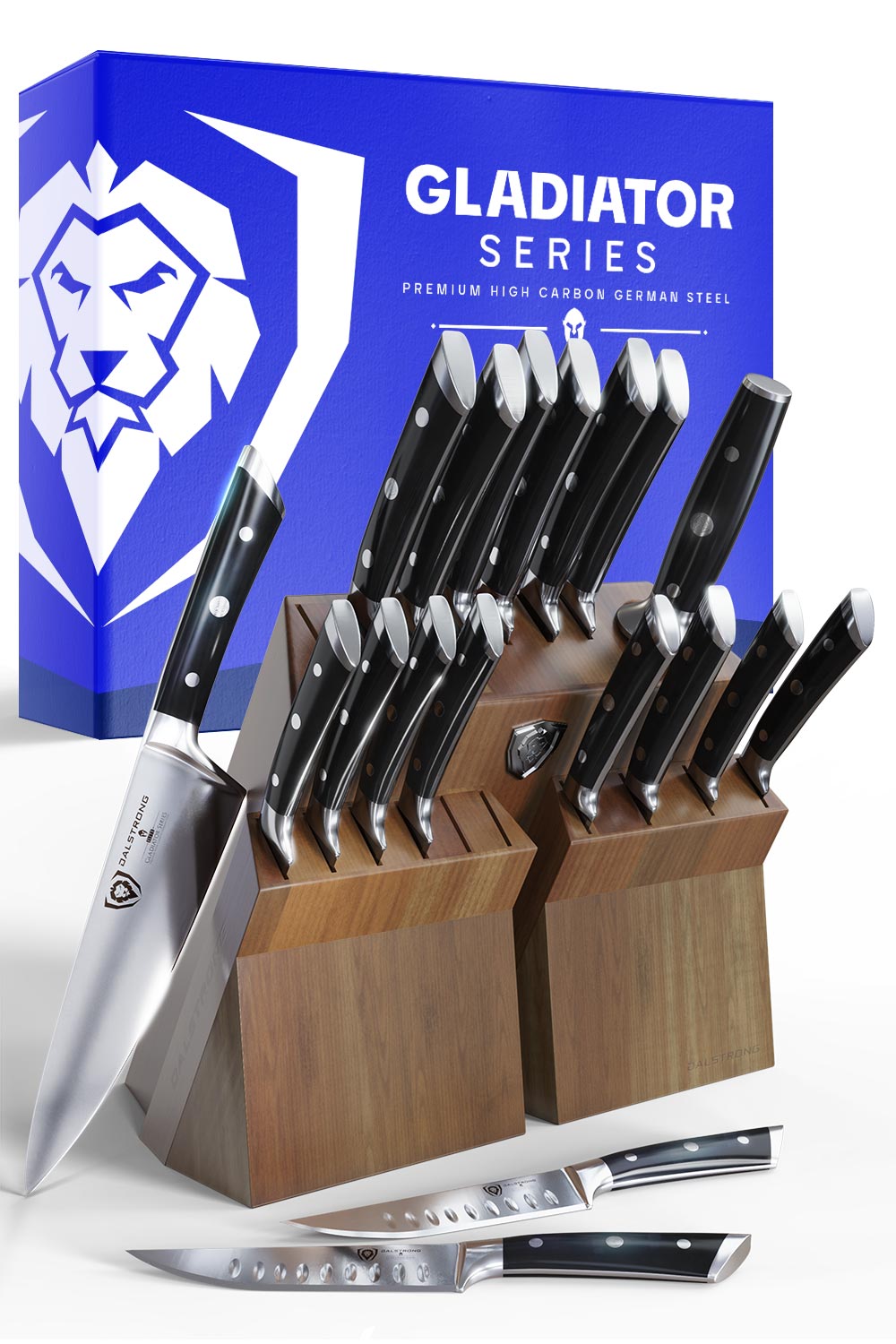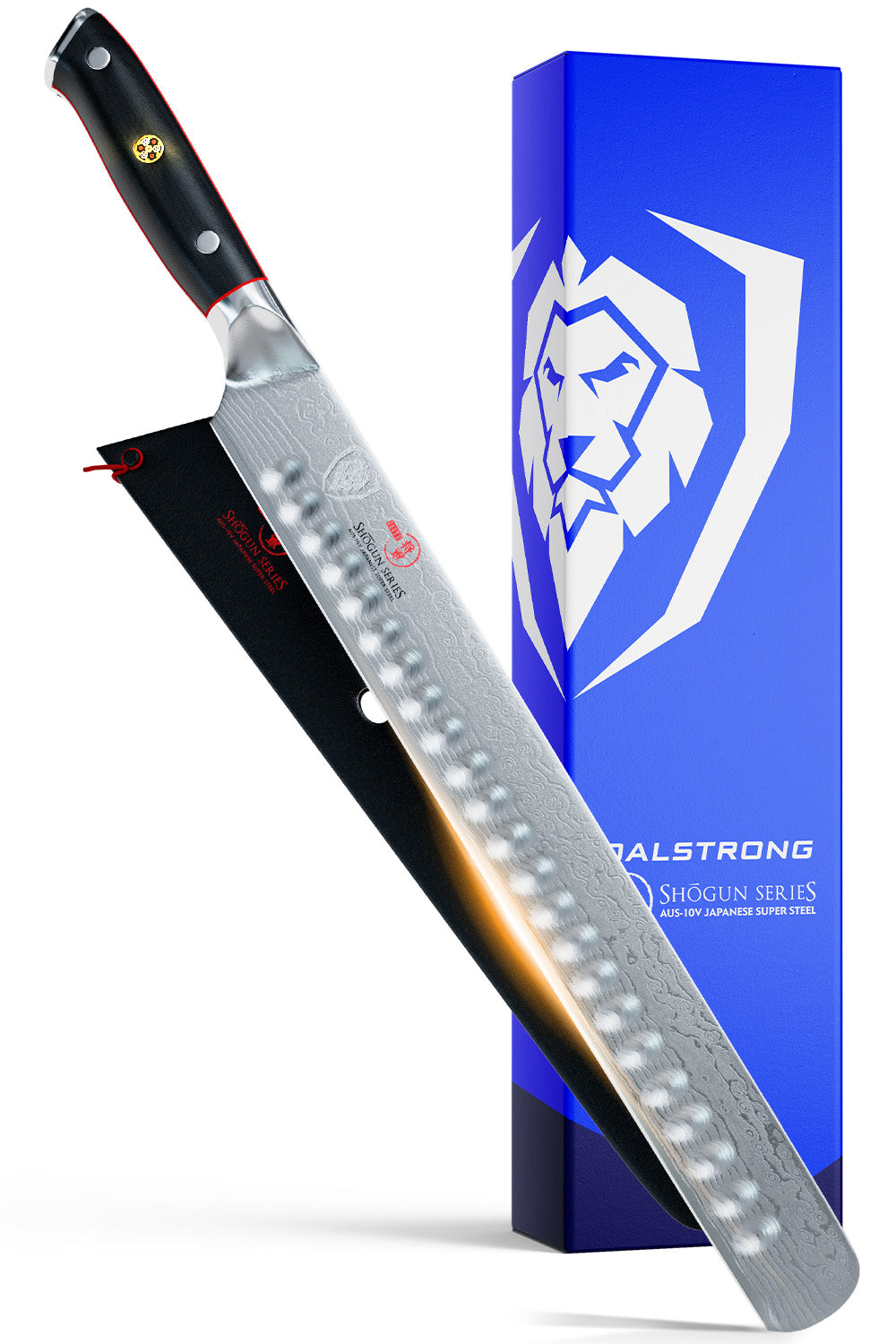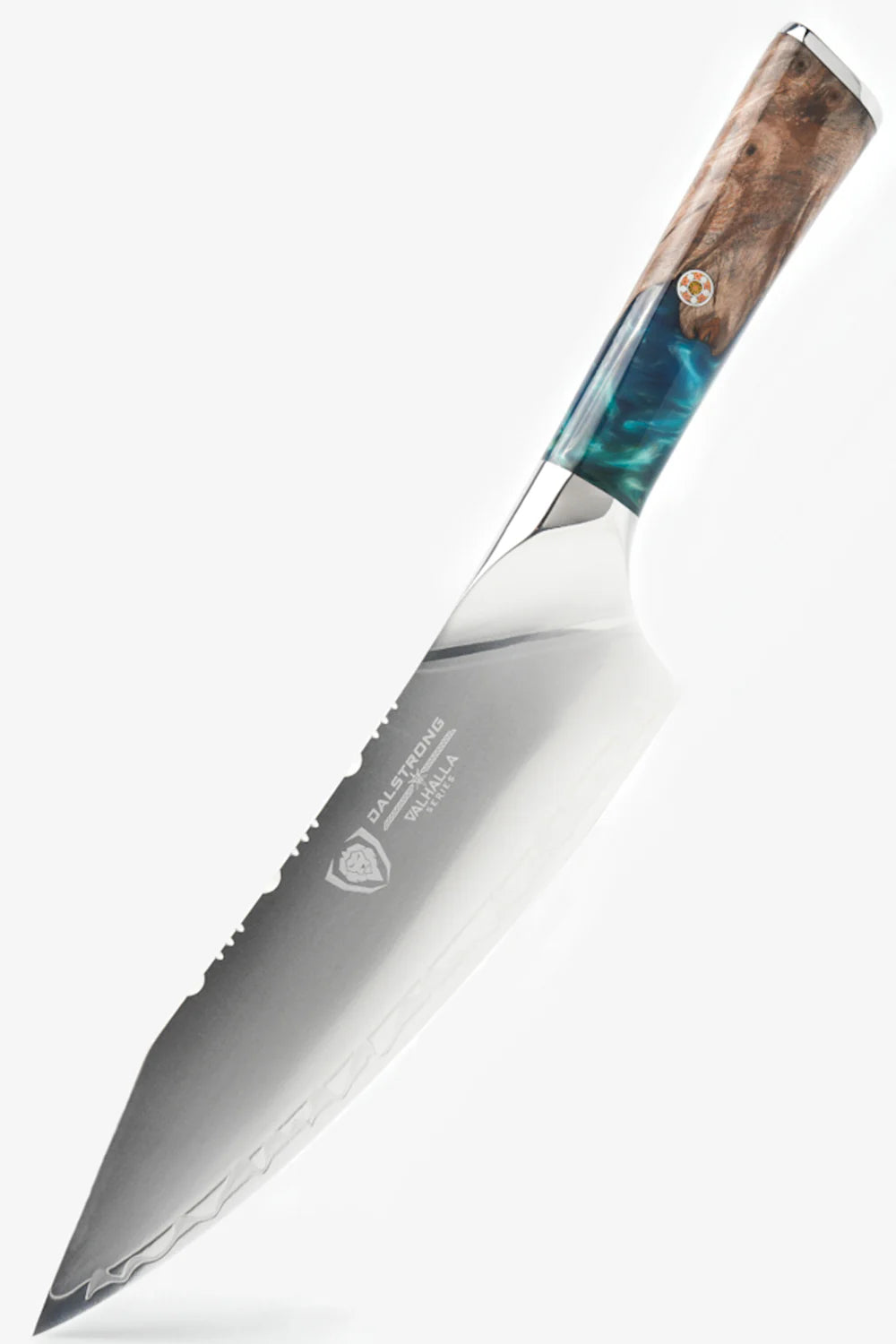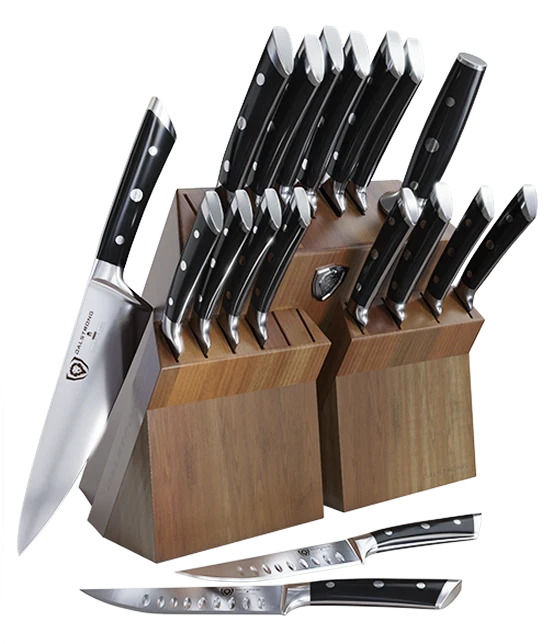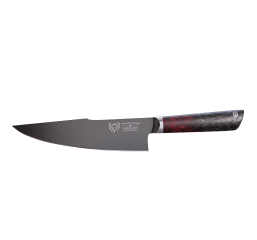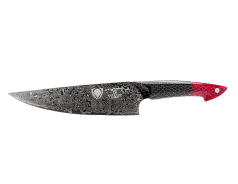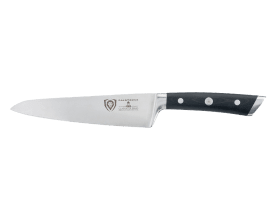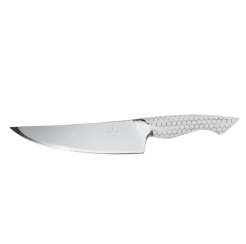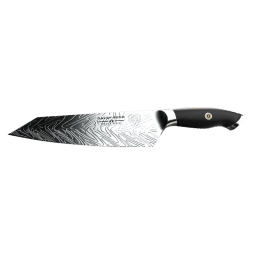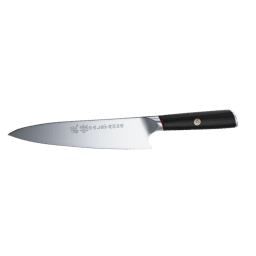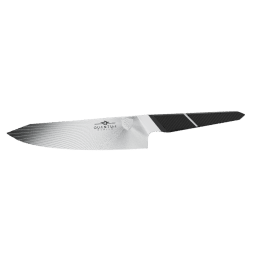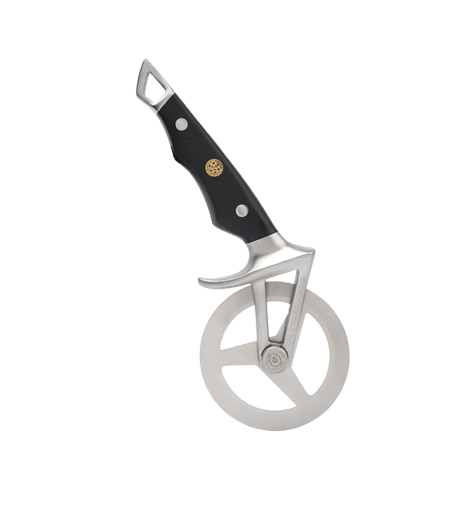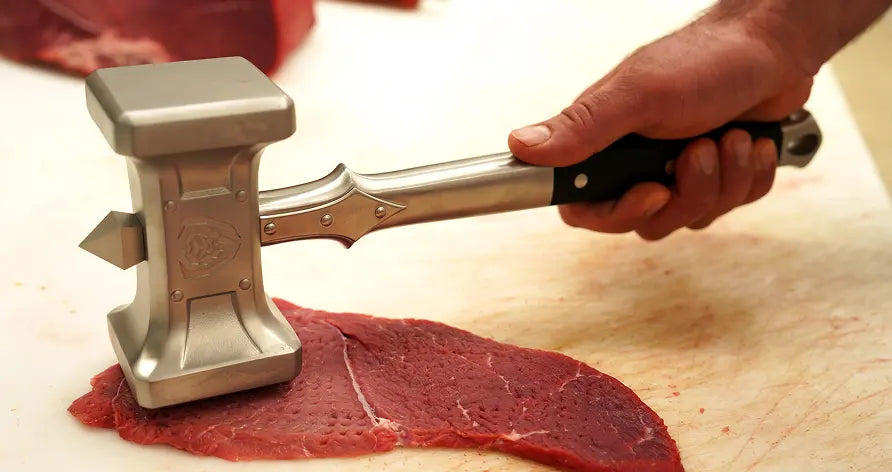4'' Paring Knife | Quantum 1 Series | Dalstrong ©
How To Cut A Pomegranate?
- Cut and remove the top
- Make thin cuts along the ridges
- Pry open with your hands
- Smack with a spoon over a large bowl
- Fill the bowl with water and remove the floating pieces
Content Table
- What Is A Pomegranate?
- How Do You Eat A Pomegranate?
- How To Cut A Pomegranate
- How To Make Pomegranate Juice From Pomegranate Seeds
- Best Knives To Cut A Pomegranate
- Frequently Asked Questions
1. What Is A Pomegranate?
4'' Paring Knife | Shadow Black Series | Dalstrong ©
A pomegranate is a round fruit, with a reddish hard exterior and a soft, white interior full of ruby seeds called aris. Each pomegranate contains hundreds of red seeds, which offer a delicious sweet-tart flavor and a crunchy texture; and can be used for many pomegranate recipes including dishes, salads, desserts and drinks.
Pomegranates are among the healthiest fruits on Earth. They offer anti-inflammatory, antibacterial and antiviral properties, as well as the ability to lower blood pressure and improve your cholesterol profile. They also improve memory, boost immunity and help in digestion. Pomegranates aris, the only edible part of the fruit, are loaded with antioxidants.
Next time you’re hesitating at the fruit stand, give them a try!
2. How Do You Eat A Pomegranate?
5.5'' Serrated Utility Knife | Gladiator Series | Dalstrong ©
Soon you’ll be adding them to any recipe like pomegranate salad, yogurt, oatmeal, smoothies, desserts, cocktails… the possibilities are endless! You can even eat them directly from the fruit. In order to fully enjoy pomegranates, consider this:
- The arils (the seeds and the juice surrounding them) are the only part of pomegranates you’re supposed to eat.
- Pick a ripe and fresh pomegranate. A ripe pomegranate will be easier to cut and will taste a lot better.
- Learn how to cut a pomegranate before actually starting (more on that later). Otherwise your kitchen might end up looking like a crime scene!
- Pomegranate arils stain. A lot. Don’t forget your apron!
- You can add them directly to a salad, for example, or blend the seeds into pomegranate juice or pomegranate molasses and use it for cooking.
- After eating pomegranates or using some of the seeds, you can freeze the leftovers for months!
3. How To Cut A Pomegranate
8'' Vegetable Knife | The Deflector | Gladiator Series | Dalstrong ©
For the easiest way to cut a pomegranate you will need:
- A sharp knife
- A bowl
- A cutting board
- A wooden spoon
- An apron
Step 1. Place the pomegranate fruit on the cutting board with the blossom end on top. Cut a circle around the top of the pomegranate and remove it.
Step 2. Now that you can peek at the interior of the open pomegranate, you will find several gentle ridges running from top to bottom. Use your paring knife or chef’s knife to score shallow cuts along these ridges (deep enough to cut through the skin and white pith, without touching the ruby red seeds). You should be left with five or six slits dividing the pomegranate into segments.
Step 3. Use these cuts to pry the fruit open with your hands. Now you have your fruit divided into several pieces.
Step 4. This is one of the fastest and most effective ways to separate the seeds from the pith (also, it’s kind of fun): smack the hard skin on each piece with a wooden spoon, over your bowl. Most of the seeds will easily fall into your hand and then into the bowl. Use your hands to manually remove the remaining seeds from the pith and into the bowl.
Step 5. Fill the bowls of water. The seeds will sink while the skin and white membrane will float. Simply remove the little pieces (white pith) from the water and drain the seeds.
4. How To Make Pomegranate Juice From Pomegranate Seeds

- Pour the seeds into a blender and pulse for around 10 seconds. If you blend for too long, you will risk breaking the seeds and the resulting taste will be too bitter. Just blend enough to separate the juice from the seeds.
- Drain the juice through a strainer (it might take time because the pulp is thick, add a bit of water to speed up the process), and use a spoon to press gently against the remaining seeds.
- Add water or sugar to taste.
- Don't forget to wear an apron to combat those pesky juice stains.
5. Best Knives To Cut A Pomegranate
Now that you’ve learned how to cut a pomegranate, put your knowledge into practice!
1. Paring Knife 4" | Phantom Series
This paring knife is a tool designed for precision maneuvers and will become as essential to you as your chef's knife. In addition to finely chopping and peeling fruits and vegetables for the perfect salad, you can also use it to cut shapes or trace patterns on food.
PROS
- The length of the blade is perfect to cover a wider cutting area.
- The width of the blade, on the other hand, is slightly narrower than average and makes it faster and more maneuverable.
- It guarantees fast, smooth and effortless cuts.
- Its D-shaped handle fits in the palm of your hand for a comfortable grip.
CONS
- The handle design is somewhat asymmetrical and seems to favor right-handers.
- For general kitchen tasks, it’s good to combine a narrow blade and a broad blade. So eventually, you will need to complete your stock with a broader knife if you don’t own one yet.
2. Chef's Knife 7" | Gladiator Series
This medium-length chef's knife has a narrow blade that allows for maximum control in any type of cut. Cutting through a hard-skinned fruit like a pomegranate won't be a problem for this "gladiator" blade.
PROS
- Comfortable and maneuverable.
- If you're left-handed, cutting a pomegranate with this chef's knife will be very easy thanks to the versatile handle.
- The blade (German ThyssenKrupp steel) provides the level of sharpness that is required to cut delicately through the skin of the fruit.
CONS
- You might prefer a shorter knife for precision cuts where you’re supposed to use the tip.
- This is not a cheap or entry-level knife. If you decide to purchase, make sure you use it for more than just pomegranates.
3. Serrated Paring Knife 3.75" | Gladiator Series
Contrary to popular belief, a serrated paring knife can do a lot more than just cutting bread. This is a very versatile tool for cutting hard-skinned fruits such as pomegranates (among so many other things!)
PROS
- Easy to use, a perfect knife to cut tough fruits.
- The handle is ambidextrous, long, comfortable and ergonomic.
- The price-quality ratio is unbeatable.
CONS
- It might feel a bit heavy the first time you use it.
- When using it to cut pomegranates, you need to be extra careful with the ultra sharp serrated edge.
4. Paring Knife 4" | Omega Series
Engineered to perform from the most intricate tasks to normal daily activities; this model might as well compete with any chef's knife when cooking your favorite pomegranate recipe. Cutting pomegranates, or any other fruit, will be easier and more fun with a magnificent paring knife like this.
PROS
- Forged from ultra-premium American steel.
- The blade is slightly longer than average, improving handling, agility and efficiency.
- The tapered blade with a "LiquidMetal" pattern allows for minimal cutting resistance and, let's face it, it's beautiful.
CONS
- If you're one of those who throws everything in the dishwasher, beware. This knife should always be washed by hand.
- The price is a little high, as is the quality.
5. Bird's Beak Paring Knife Peeler 3" | Crusader Series
This state-of-the-art knife consists of a single solid piece whose blade transitions into a high-chromium stainless steel handle. The short, curved blade is especially suited for intricate cuts and is ideal for peeling and coring modestly sized round fruits and vegetables such as pomegranates..
PROS
- The solid steel construction ensures endurance and strength.
- The blade is polished and smoothed for comfortable gripping.
- It comes in a smart-design sheath to protect the knife and your fingers.
CONS
- The knife is perfect for more precision tasks; but activities like dicing, for example, might come easier with another shape.
- If you enjoy classics and are looking for something more traditional, you might find this design a little too unconventional.
6. Frequently Asked Questions About Pomegranates
6.5'' Serrated Utility Knife | Shadow Black Series | Dalstrong ©
When are pomegranates in season?
The pomegranate season takes place in fall and winter, for the Northern Hemisphere that means from late October until February.
How to pick a pomegranate?
Look for ripe pomegranates with firm, smooth skin. The fruit should also be heavy (because of the weight of the juice). The color may vary from light to dark red.
What part of a pomegranate is poisonous?
Pomegranates are very healthy fruits. However, the only part you’re supposed to eat is the arils. The rest (pith, root, stem and peel) could be unsafe when taken in large amounts.
How do you store pomegranate seeds?
Whole pomegranates can last up to 2 weeks in your fridge (if you picked them fresh). Once you cut them open, you can keep the seeds in the fridge for up to 5 days; and if you went for the fresh pomegranate juice recipe above; you should drink it or use it in no more than a week.
You can also store the seed in the freezer for a couple of months. How to freeze pomegranate seeds? First, make sure they’re dry and then spread the loose seeds in one layer over a baking sheet. Freeze them like that, separate from one another (it takes up to one hour). Then store them in a freezer bag or airtight container; they can last several months in your freezer.
Check Out Top Quality Kitchen Knives Today



